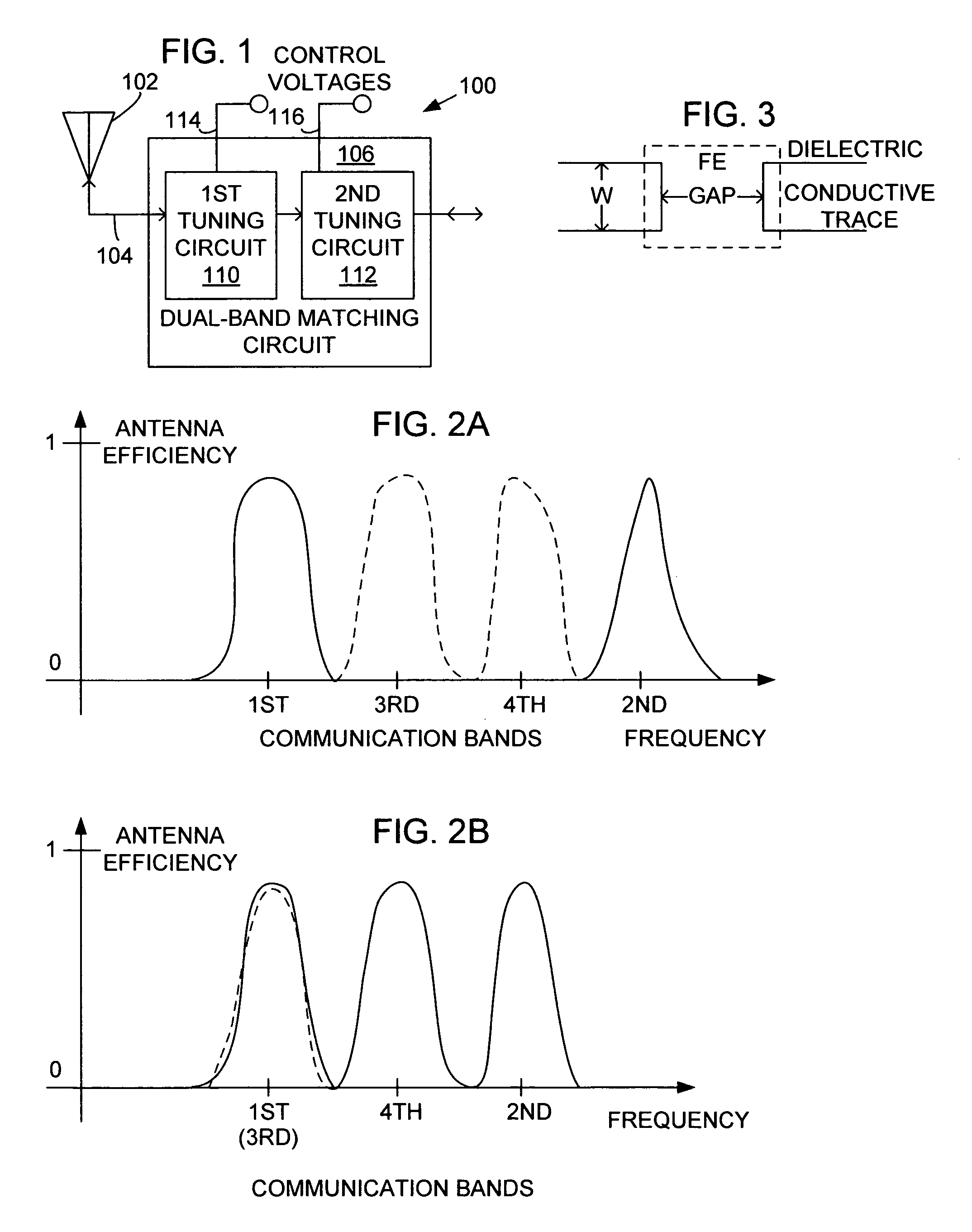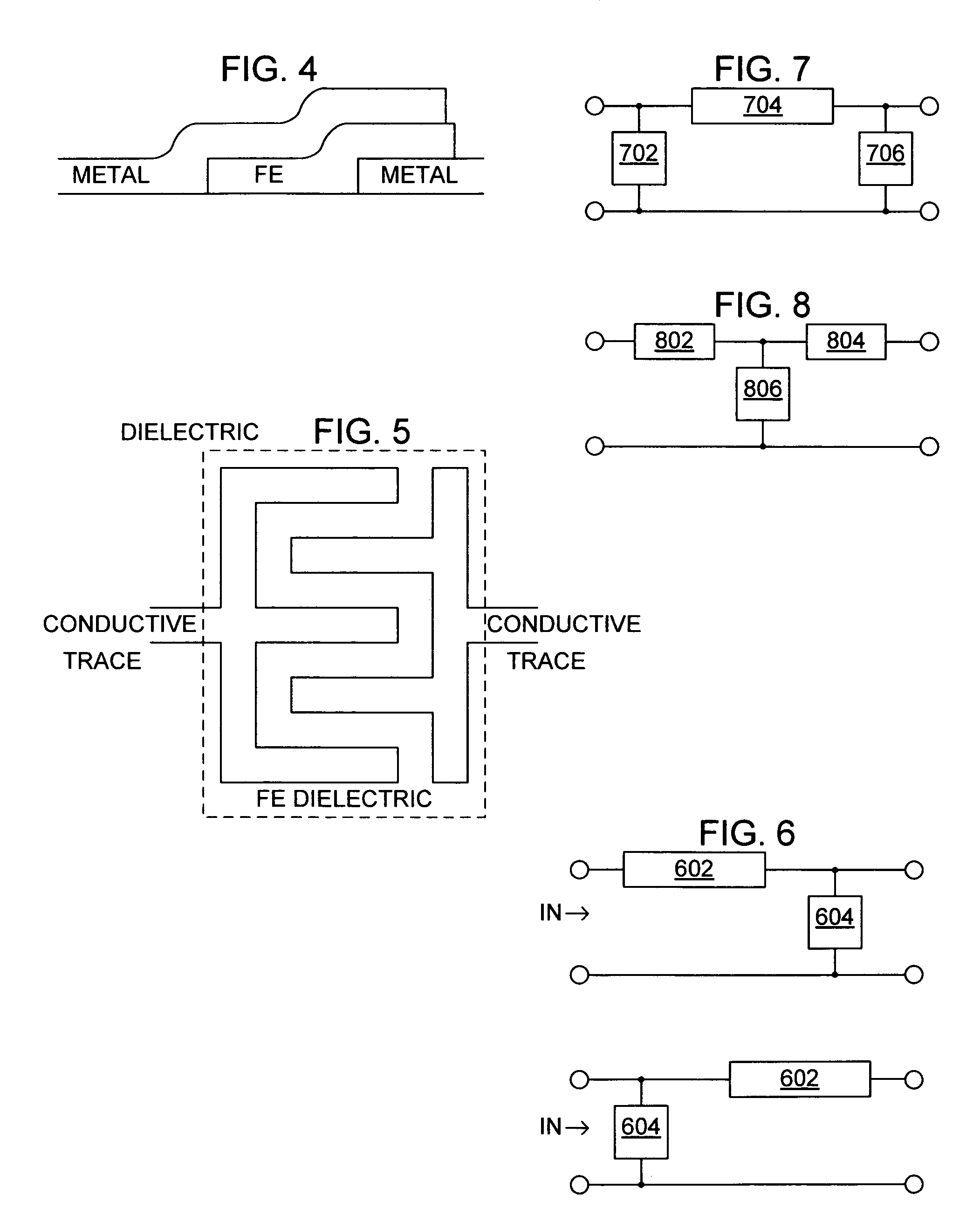System and method for dual-band antenna matching
a dual-band antenna and matching technology, applied in the field of wireless communication antennas, can solve the problems low design efficiency, and insufficient design to cover all the required frequencies, and achieve the effects of reducing the loss of ferroelectric components, reducing the cost of cellular band performance, and improving gps and pcs performan
- Summary
- Abstract
- Description
- Claims
- Application Information
AI Technical Summary
Benefits of technology
Problems solved by technology
Method used
Image
Examples
Embodiment Construction
[0037]FIG. 1 is a schematic block diagram of the present invention dual-band antenna matching system. The system 100 comprises an antenna 102 having an interface port on line 104 with a frequency-dependent impedance. A dual-band matching circuit 106 includes an output port connected to the antenna interface port on line 104. Line 104 can be a transmission line, for example. The dual-band matching circuit 106 selectively supplies a conjugate impedance at a first and a second communication band. Alternately, the dual-band matching circuit 106 supplies a conjugate match at a third and a fourth communication band. Typically, the antenna has a fixed impedance that varies with respect to frequency or communication band. However, in one aspect of the system, the antenna can be frequency tunable to further the dual-band matching process.
[0038]Specifically, the dual-band matching circuit 106 supplies a conjugate impedance at the first communication band in response to a first tuned frequency...
PUM
 Login to View More
Login to View More Abstract
Description
Claims
Application Information
 Login to View More
Login to View More - R&D
- Intellectual Property
- Life Sciences
- Materials
- Tech Scout
- Unparalleled Data Quality
- Higher Quality Content
- 60% Fewer Hallucinations
Browse by: Latest US Patents, China's latest patents, Technical Efficacy Thesaurus, Application Domain, Technology Topic, Popular Technical Reports.
© 2025 PatSnap. All rights reserved.Legal|Privacy policy|Modern Slavery Act Transparency Statement|Sitemap|About US| Contact US: help@patsnap.com



